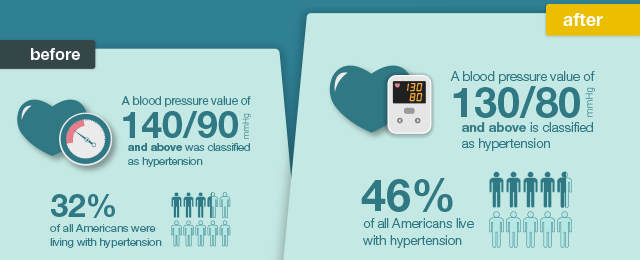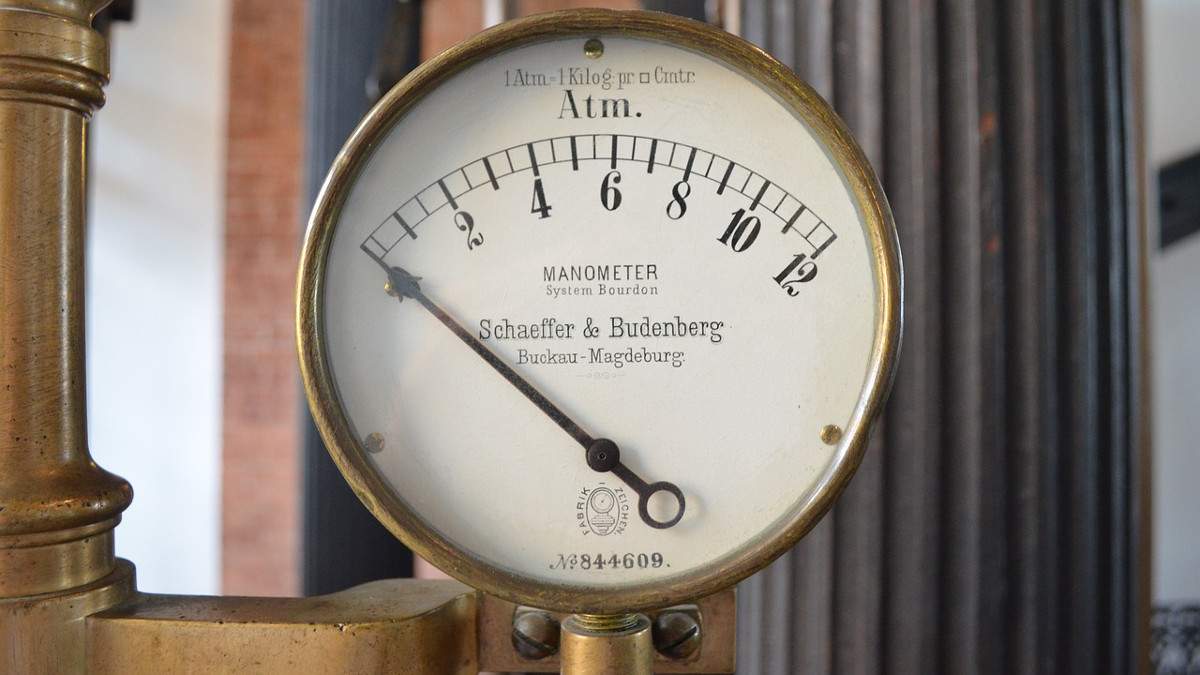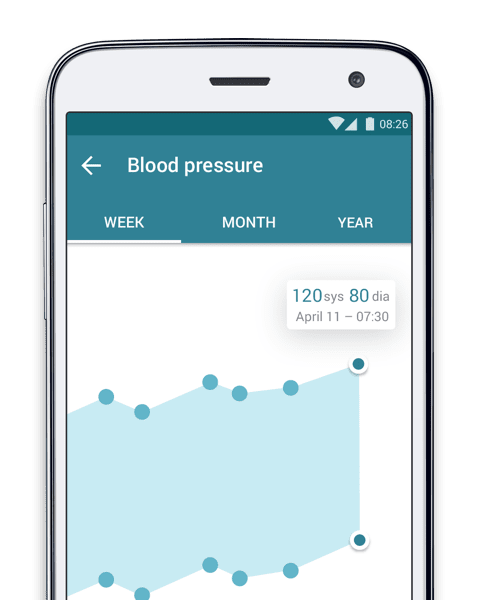Essential hypertension (also known as primary hypertension) is high blood pressure that does not have a known cause. Because it is often symptomless, millions of people living with essential hypertension do not realize it. Unfortunately, the idiom what you don’t know can’t hurt you does not hold true, as essential hypertension is a major risk factor for stroke, heart attack, kidney failure, and other serious complications. In many of those cases, lifestyle changes and medication would be able to effectively control the condition.
We’ve compiled 10 important (and one not-so-important) facts, because when it comes to essential hypertension: what you do know can save your life.
1. ‘Essential’ Has a Different Meaning When It Comes to Hypertension

This is probably the definition of *essential* that you are most familiar with, and one that does not seem entirely appropriate to describe high blood pressure. In medical parlance, however, it means ‘of unknown cause,’ and it is this definition that characterizes essential hypertension. What it means, essentially, is that the root cause one’s high blood pressure cannot be determined, and it accounts for roughly 90% of those living with hypertension. It is also known as primary hypertension. Other forms include: - Secondary hypertension – high blood pressure caused by another condition - Malignant hypertension – which has obvious and noticeable symptoms, such as chest pain, nausea, and headaches - Resistant hypertension – a form that is impervious to lifestyle changes and medication, usually due to an underlying (but often unknown) cause - Pulmonary hypertension – which specifically affects the arteries in the right side of your heart, and lungs - Orthostatic hypertension – a sudden spike in blood pressure caused by standing up
Considering there is a form of hypertension called malignant, you would be forgiven for thinking that there must also be a benign form. However…
2. Hypertension Cannot be Benign
… benign essential hypertension is a misnomer and an antiquated term, but one you may still come across. The word ‘benign’ defines conditions that are not harmful in effect. Essential hypertension, even when symptomless, still carries with it the risk of stroke, heart attack, and other related conditions. So, while ‘malignant’ and ‘benign’ are usually antonyms – when defining tumors, for example – that is not the case when it comes to high blood pressure.
Indeed, it is hypertension’s infamy for being symptomless, but still posing a very real threat, that has earned it the undesirable alias, The Silent Killer.
It is why essential hypertension often goes undetected and undiagnosed, and why those at risk should have their blood pressure measured regularly. When doing so, remember…
3. Systolic and Diastolic Blood Pressure Both Matter
… that blood pressure readings don’t just comprise of one number, but two. Your systolic number is usually written on top, with diastolic blood pressure underneath. The systolic reading is the maximum pressure your heart exerts during beats, while diastolic is the pressure exerted between beats. It is often assumed that the systolic reading is more important. In many ways this is true, as it is generally a more accurate indicator of the risk of stroke or heart attack, particularly in older people.
However, studies suggest that diastolic blood pressure may be more important in younger people and can provide a better indication of possible complications in the future. Some research has also suggested that once diastolic blood pressure becomes extremely high, it is a better indicator of risk than systolic.
Ultimately, you are living with essential hypertension if your systolic or diastolic blood pressure is over certain numbers. What are those numbers? you ask.
4. Hypertension Classifications Recently Changed in the USA
Good question! And one that is a little trickier to answer since November last year, when the American Heart Association (AHA) changed its guidelines and lowered the threshold for hypertension. Since then, a systolic reading of 130 mmHg or above or a diastolic reading of 80 mmHg above are now considered hypertension territory in the USA. Previously, those thresholds were 140 mmHg and 90 mmHg respectively, scales that are still widely used outside of the USA. The AHA now classify blood pressure level as:
- Normal: Less than 120/80 mmHg
- Elevated: Systolic between 120-129 and diastolic less than 80 mmHg
- Stage 1 hypertension: Systolic between 130-139 or diastolic between 80-89 mmHg
- Stage 2 hypertension: Systolic at least 140 or diastolic at least 90 mmHg
Due to the change, 31 million additional Americans are now living with stage 1 hypertension, bringing the total number of people in the USA living with essential hypertension to between 90 and 100 million. The change will have had the greatest effect on younger people, particularly men aged around 45 and above, who would previously have been considered to be living with pre-hypertension. The good news for those people is that stage 1 essential hypertension does not often require medication, but a few healthy lifestyle changes that help keep blood pressure from reaching riskier levels.
The not-so-good news is…
5. Half of Those with Essential Hypertension Don’t Realize
…many of those affected will remain completely unaware of their condition. This goes back to the aforementioned fact that essential hypertension is usually symptomless. So, while lifestyle changes may be adequate in combatting the condition, one may not realize the need to make such changes.
Unfortunately, the very first sign of essential hypertension can be a life-threatening event such as stroke or heart attack. Consequently, an estimated 10 million preventable hypertension-related deaths occur worldwide each year – deaths that could be avoided with simple treatment.
How can this be avoided?

Other posts you may be interested in on the MyTherapy blog:
6. Testing is Cheap and Easy
Quite simply: the more people who get their blood pressure measured, the more who will be able to nip the problem in the bud. Essential hypertension is perhaps the easiest serious health condition to discover, thanks to the simplicity and low cost of testing. A sphygmomanometer (aka a blood pressure monitor) is a fundamental piece of equipment for most healthcare professionals, and a test takes a matter of minutes (allowing for a few minutes of rest beforehand). Initiatives such as the upcoming May Measurement Month are also a wonderful opportunity for people around the world to get their blood pressure measured.
It is recommended that every adult has their blood pressure checked at least once every five years, and more frequently as you get older or if you are at particular risk of essential hypertension.
It is also possible…
7. You Can Test at Home
… to measure your own blood pressure at home. One problem with blood pressure tests is they only provide a snapshot of your blood pressure, and it is a measurement that fluctuated constantly. In fact, simply being in a clinical environment such as a doctor’s office may increase your blood pressure, a phenomenon called white coat syndrome.
This is why doctors may take your blood pressure multiple times, over multiple visits, or take a 24-hour reading with an ambulatory blood pressure monitor. But if you really want to take the initiative, one way to do so is with home testing. Monitors are available for a reasonable price (usually starting from $20-$30, increasing depending on features), and frequent readings are a great way of painting a long-term picture of your blood pressure. If you are interested in measuring your blood pressure from home, have a look at our simple how-to guide: Measuring Your Blood Pressure at Home in 5 Easy Steps

Of course, home monitoring should not be done at the expense of professional examinations, but can be massively valuable for those at risk of essential hypertension. Those at risk. I’ve used that phrase a few times now. You may be wondering who exactly those at risk are. Well…
8. Numerous Risk Factors Are Linked to Essential Hypertension
… that is another tricky subject. As we know, essential means ‘of unknown causes’ in the medical world. Nonetheless, certain risk factors have been identified. Controllable ones include:
- A sodium-heavy diet
- Excessive alcohol consumption
- Smoking
- Lack of exercise
- Stress
These risk factors are common for a plethora of health conditions, and essential hypertension is one of them. If your lifestyle incorporates any of the above, even if you have no symptoms, being aware of your blood pressure is a wise move to make. Should you discover you are living with essential hypertension, you and your doctor can work on a treatment plan (lifestyle changes and medication if needed) that will help mitigate the risk of stroke, heart attack, and other serious complications.
Even if your lifestyle does not put you at risk of essential hypertension, there are certain non-controllable risk factors you should also be aware of.
9. Other Risk Factors Include Age, Ethnicity, and Gender
At the time of writing, no one has discovered how to prevent aging. Assuming the same remains true for the foreseeable future, age will remain a key risk factor for essential hypertension. As previously mentioned, new guidelines in the USA will have largely affected people around the age of 45 and above, many of whom will now fall within the stage 1 hypertension parameters. The risk exponentially increases with age, and those 65 and above are at particular risk of stage 2 hypertension (not to be confused with secondary hypertension).
Ethnicity also appears to play a role in blood pressure. It is not entirely understood why, but the rate of essential hypertension in African Americans is among the highest of any demographic worldwide. Whether this is due to environmental factors such as eating habits; genetics; or a mixture of both, has yet to be determined. Regardless, the prevalence of essential hypertension in African Americans, both male and female, is significantly higher than the general population.
Similarly, the reason men are more susceptible to essential hypertension at a younger age is not entirely clear. However, the same phenomenon has been found in animals such as rats, dogs, mice, and chickens, suggesting hormones and genetic differences between men and women plays a role. The end result is that men are more likely to have diagnosis before 50 years of age, particularly under the new guidelines, while women are more prone to essential hypertension after the age of 55. Men are also more likely to develop related complications, such as kidney disease.
Another risk factor that is out of your control is family history. Like many diseases, people whose family have a history of essential hypertension are at risk of developing it themselves.
While these risk factors are obviously beyond your control, being aware of your inherent risk is important. That knowledge can help you know whether you need treatment, that may include…
10. Medication Can Effectively Control Essential Hypertension
… medication such as beta blockers. While positive lifestyle changes are a valuable tool in combating essential hypertension, the benefits of medications cannot be overlooked. Beta blockers, for example, help your heart beat slower and with less force. They may be used in conjunction with angiotensin-converting enzyme (ACE) inhibitors, diuretics, or a host of other types of medication, depending on one’s particular needs.
Regardless of which specific medications suit each patient, the fact of the matter is that essential hypertension is very often manageable once diagnosed. Studies have shown that treatment to reduce blood pressure, combined with broader cardiovascular therapy, reduces the risk of heart attack by 20-25%, stroke by 35-40%, and heart failure by 50%.
🌟 BONUS FACT! 🌟 mmHg Means Millimeter of Mercury
As you’ve made it this far, here is a bonus fact about blood pressure: it is measured in millimeters (mm) of mercury (Hg). This seems a little odd – if you have mercury running through your veins then essential hypertension is the least of your worries. However, the term actually comes from the very first accurate pressure gauges, in which a U-shaped tube is partially filled with a liquid (mercury).
There are various different variations of the U-tube manometer, all of which work by measuring the extent to which the mercury is pushed in one direction or the other due to the pressure exerted upon it. The difference between the levels of the liquid is measured (mm) and, once mercury’s density and gravitational acceleration is taken into account, you have a reading of pressure (mmHg). Simple!
Mercury was used because of its high density, which allowed such gauges to be produced at a reasonable size, and its stability under pressure. While it is used less often these day, because of its toxicity, the measurement mmHg is still commonly used in medicine, aviation, meteorology, and other scientific fields.
So, there you have it: 10 facts you need to know about essential hypertension, and one you absolutely don’t (but is interesting nonetheless).
Take a look at some of the other posts on the MyTherapy blog:
- Stroke: A Caregiver’s Story
- Hypertension In The UK: 2017 Facts, Signs, Causes and Treatments [Infographic]
Learn about common hypertension medications from our DrugWiki FAQ pages:



